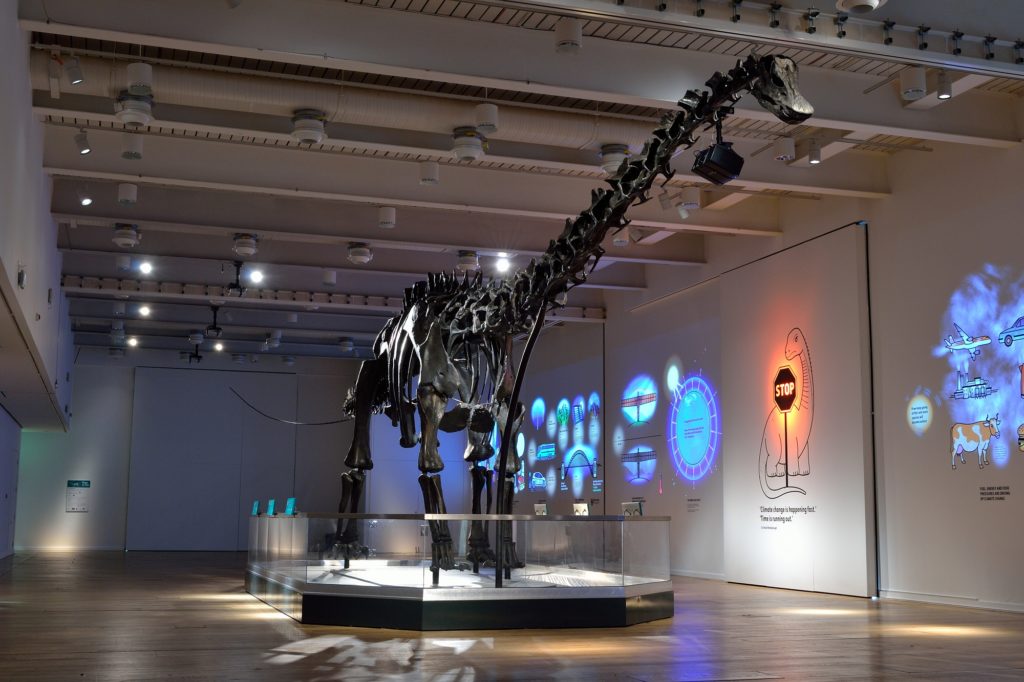My name is Amy Tooke and I’m a PhD student at the University of Sheffield, researching the bacterium Staphylococcus aureus (its most famous guise is as the hospital superbug MRSA) and how it responds to antibiotics and interacts with the immune system during infection, so it might be unexpected that I am doing an internship at the Great North Museum: Hancock. As a requirement of my funding from the Biotechnology and Biological Sciences Research Council (BBSRC), I have to complete a three month Professional Internship for PhD Students (PIPS) unrelated to my research. The idea behind this is to broaden my skillset and experience different ways of working beyond the bubble of academia.
I approached the GNM because having visited when I was a masters student at Newcastle University, I knew what a friendly place the museum was, with exciting displays and exhibitions; I think that going to visit museums when I was a child, as well as being on the receiving end of university outreach and science communication, was a big factor in getting me interested in and excited about science and I wanted to use my PIPS opportunity to get involved with this. I had a look on the GNM website and saw the wide range of workshops and resources the Learning Team provide to schools and thought that it would be interesting to learn more about what they do.
I came to meet some of the museum staff before they asked if I would like to start my internship at the museum at a very exciting time – just before the arrival of Dippy, the magnificent diplodocus skeleton cast on tour from the Natural History Museum – so that I would be able to see the build up to a big exhibition, and the launch of it, as well as being able to work with the Learning Team.

So far, I have done lots of new things! At the moment we are busy with school trips here to see Dippy. My teaching experience prior to this was as a graduate teaching assistant in Sheffield helping undergraduate students in their lab sessions, and some outreach with sixth formers, so it has been a contrast helping with primary school workshops, and even more so with the early years (under 5s) groups. I have particularly enjoyed the science workshops with key stage 1 and 2 classes including Classify! and Adaptation and Evolution where children study the handling collection of taxidermy animals and Fossils and Dinosaurs where they investigate real fossils to work out what they are, as well as acting out how fossils form over millions of years. It’s wonderful to see the children drawing their own conclusions and making suggestions; sometimes they have very entertaining things to say!
I’ve been shown around the GNM collections stored underneath the Discovery Museum, featuring thousands and thousands of objects, as well as seeing the Archaeology stores around the University. You can see virtual tours around the Biology and Ethnographic stores on the GNM website. I’m looking forward to spending some more time in the stores and seeing how such enormous collections are organised and looked after.
I got to talk about my research with the public whilst there was a Curator’s Choice event in the Natural Northumbria gallery where visitors were able to see and hold objects from the collections. It was a challenge to link bacterial infections to the museum collections. I chose to introduce the concept of looking for new sources of antimicrobials in the natural world with some fresh lavender, and a plant fossil, before explaining the threat of antimicrobial resistance and showing an image of Alexander Fleming’s famous mouldy agar plate from which he discovered penicillin. I realised how I could have presented things differently with larger objects, but I still enjoyed myself and had some really interesting conversations with visitors. I’m hoping to do some more object handling sessions in the galleries where I can put what I learned into practice!

I’ve loved having the opportunity to be creative, developing resources such as museum trails and I will be making some more teaching resources. I have also made so many Dippy hats my hands kept turning green during half term, and done a lot of laminating, a key skill in the Learning Team! One of my highlights has been seeing the transformation of the exhibition space upon the arrival of Dippy and getting sneak peaks of the construction when he arrived from Glasgow “flat-pack” style in boxes; I did not actually build Dippy myself, although I think that is what some of my lab group in Sheffield think I am doing for three months… It was a special moment when we saw his skull being attached to the enormous skeleton along the length of the exhibition space. I think everyone agrees it’s a fantastic exhibition that makes a big visual impact with the moving projections behind Dippy, and spreads a very important message about the effects of climate change.
I’m over halfway through my internship now and am excited for what’s to come. It’s been a nice contrast to working on my lab project, but I’ve enjoyed still being able to work in a practical way. I’ve definitely developed my skills and it’s been giving me food for thought about what I want to do long term after my PhD; so far it’s been a successful PIPS!
Dippy on Tour is at the Great North Museum: Hancock until Sunday 6 October.
One Response to From the Lab to the Galleries – My Great North Museum: Hancock internship. A guest blog by Amy Tooke